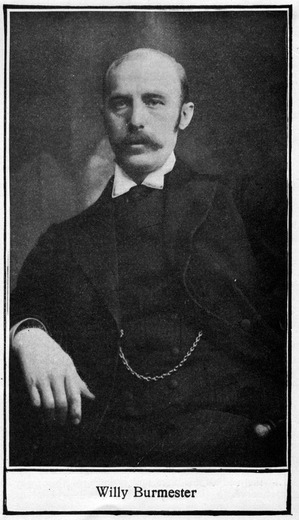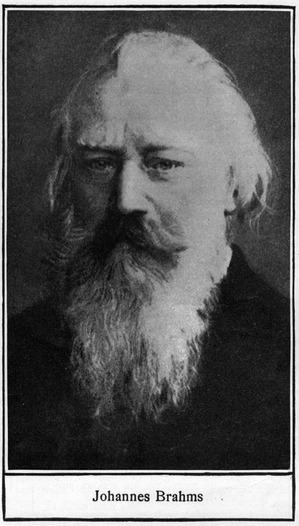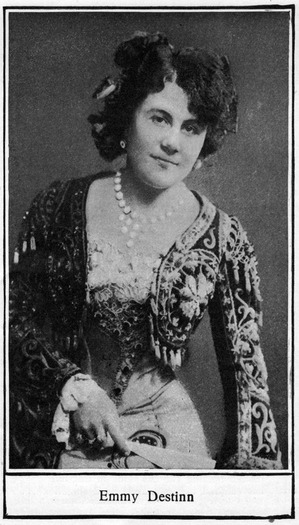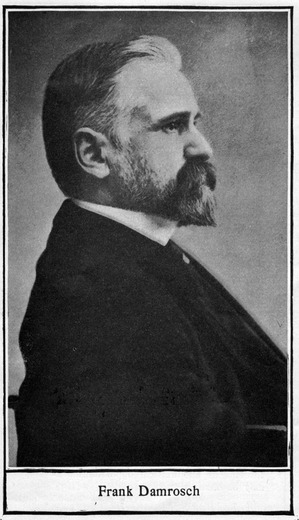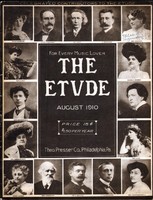(Lahch'-ner, ch gutteral.)
Franz Lachner was born April 2, 1803, at Rain, on the Lech, in Bavaria. He was a member of a large family, many of whom attained distinction as musicians. Franz was well educated in other things besides music, but music was the study which interested him most. He went to Vienna in 1822, and studied under Stadler and Sechter, at the same time becoming very intimate with Schubert. He became capellmeister of the Karthnerther Theatre, and held this post until 1834. Lachner eventually left Vienna for Mannheim, and later for Munich, where in course of time he became conductor of the Court Opera. He also conducted the sacred concerts of the Court Band, and the concerts of the Musical Academy at Munich, and Musical festivals at Munich and Aix-la-Chap-elle. All this time he was a prolific composer, and produced many works of importance. His works include eight symphonies, two oratorios, four operas, various cantatas, a requiem, orchestral suites, songs, choruses and many other works of different kinds. He was a musician of the "old" school, very thorough, scholarly and apparently tireless. Had his music possessed the "divine fire" he would have been one of the greatest musicians of all time. As it is, however, he is chiefly remembered as one of those who have made clear and open the paths blazed by the pioneers of musical thought.
(Boor'-mes-ter).
Burmester was born March 16, 1869, at Hamburg. He was a pupil of Dr. Joachim in Berlin, with whom he studied for many years. In 1885, however, he seceded from the Joachim school, and commenced to develop his technic with a view to achieving virtuosity rather than a classic purity of style. He is a well-developed artist, however, and his taste is broad enough to include all schools of composition in his repertoire. He is at his best, nevertheless, as an interpreter of the works of Paganini, and his rendering of the classics is said to be somewhat cold and devoid of feeling. On the continent his reputation is very high. He failed, however, to make a great impression on his first visit to England and America, though his audiences were compelled to admire his marvelous technical feats, especially his left- hand pizzicato, and rapid runs in thirds and tenths. His faulty intonation, however, interfered with his success somewhat. In later years this defect has been improved very considerably, and we are told that those who have heard him play at his more recent concerts have been much impressed with his sterling musical qualities. He has been somewhat hampered in his career, and has been a considerable sufferer from having worn the end of his first finger down to the nerve.
Brahms was born at Hamburg, May 7, 1833, and died in Vienna, April 3, 1897. His early musical education was cared for by Cossel, and later by Marxsen, Cossel's own teacher. Brahms went on tour with Remenyi, the violinist, in 1853 and became acquainted with Joachim. This meeting had a great influence on Brahms' career. For a time Brahms lived with Joachim, who was much impressed with his ability. Through Joachim he became acquainted with Liszt and Schumann, both of whom regarded him, strangely enough, as a follower of the most advanced Romantic school of modern music. For four years Brahms was concertmeister to the Prince of Lippe-Detmold (1854-58). Apart from this he held very few official appointments, and appeared very little in public. His compositions, however, brought him into great prominence, and he found a staunch supporter in Mme. Clara Schumann, who did much to familiarize the public with his pianoforte music. His compositions are very numerous though not very familiar to the average musician on account of their serious nature. Brahms, like Bach, is a musician's musician;" the beauty of his music does not lie on the surface, but it exists, and when found is abiding. The general public is more familiar with Brahms' Hungarian Dances than with his four symphonies or even his Requiem, and yet Brahms can only be classed with the very highest musical composers, and none who study his works can fail to appreciate his serious purpose, and loftiness of conception.
Mme. Emmy Destinn was born at Prague, Bohemia, February 20, 1878. At first she devoted herself to studying the violin, and intended to shine as a virtuoso on that instrument. When she was well on in her teens, however, her voice was so rich and full that she changed her mind and determined upon an operatic career. Her real name is Kittel, but after taking vocal lessons from Mme. Loewe-Destinn she adopted the last name of her teacher. She made such progress that the Intendent of the Berlin Opera House engaged her at once when she was brought to her notice. She was scarcely nineteen at the time, but her voice and her genius, for acting soon won the Berlin public. Her fame became international in 1901 on account of her singing the part of Senta in The Flying Dutchman at Bayreuth. From that day on her success has been uniform, and she has appeared in London and New York during the regular opera seasons in these cities. While she is successful in the lighter roles of the Wagner operas, her soprano voice is better adapted to music of a more lyrical type. She excels in the part of Carmen, in which she is said to rival Calve. Emmy Destinn "created" the part of Mme. Butterfly in Puccini's opera of that name, and also the part of Salome in Strauss' opera at its production in Berlin. She is very versatile and besides being a singer is a poet, novelist and playwright, though nothing she has done in this line has eclipsed her reputation as a singer.
(Rhine'-bair-ger.)
Rheinberger was born March 17, 1839, at Vaduz, Lichtenstein, and died Munich, November 25, 1901. When only seven years old he was organist at Vaduz Parish Church, and his first composition was performed the following year. In 1851 Rheinberger entered the Munich Conservatory, eventually becoming professor of pianoforte playing, and later, professor of composition at that institution. When the Munich Conservatorium dissolved he was appointed "Repetitor" at the Court Theatre, from which he resigned in 1867. He occupied several important positions in the musical world, and became famous as a teacher of composition and organ. He numbered a great many Americans among his pupils, many of whom, such as Dr. Horatio Parker, Professor G. W. Chadwick, and Henry Holden Huss, have achieved a foremost place in the musical world of this country. As a composer Rheinberger wrote a large number of works of great musicianly value. His twenty organ sonatas are declared by the writer in Grove's Dictionary to be "undoubtedly the most valuable edition to organ music since the time of Mendelssohn. They are characterized by a happy blending of the modern romantic spirit with masterly counterpoint and dignified organ style." When the present conservatory was founded in Munich, Rheinberger was appointed professor of organ and composition, a post he held until death. He was also given the title of "Royal Professor."
Frank Damrosch was born in Breslau, June 22, 1859. He came to America with his father, Dr. Leopold Damrosch, in 1871, having already studied music under Pruckner and Vogt. He studied in New York under von Inten and his father. He also studied in Europe under Moszkowski. He originally intended to adopt a business career, and to that end went to Denver, Col., but the musical impulse proved too strong, and in 1884 he was an organist, conductor of the Denver Chorus Club, and supervisor of music in the public schools. For some years he was chorusmaster at the Metropolitan Opera House in New York. He has also conducted the Mendelssohn Glee Club from 1885 to 1887 and other important organizations. In 1892 he organized the People's Singing Classes, which has since developed into the People's Choral Union, with a membership of 1200, and he was also instrumental in founding the Musical Art Society of New York. In 1897 he became supervisor of music in the public schools in New York. As director of the New York Institute of Musical Art, Frank Damrosch has firmly established his right to be considered among the foremost musical educators in America, even if his work in other directions had not already won him that distinction. This institution is one of the richest of its kind in the world, and, together with other American music schools, has done much to give American students as fine musical opportunities as may be obtained anywhere.
HOW TO PRESERVE THESE PORTRAIT-BIOGRAPHIES
Cut out the pictures, following outline on the reverse of this page. Paste them on margin in a scrap-book, or on the fly-sheet of a piece of music by the composer represented, or use on bulletin board for class, club, or school work. A similar collection could only be obtained by purchasing several expensive books of reference and separate portraits. This is the fifth set of picture-biographies in the new series, which commenced in January, and included portraits and life-stories of Hofmann, Anton Rubinstein, von Fielitz, Sullivan, Liza Lehmann, Vieuxtemps, Franck, Wagner, Siegfried Wagner, Dancla, Gadski, Johann Strauss, Paganini, Bach, Paderewski, Foote, Bloomfield-Zeisler, Max Reger, Sauer, Mendelssohn, Balfe, Smetana, Marchesi, Hans Sitt, Corey, Mahler, Thalberg, Herbert, Holmes, Dreyschock, Joseffy, Chopin, Spiering, Caruso, Jenny Lind and Offenbach. The series published last year is now obtainable in book-form.



